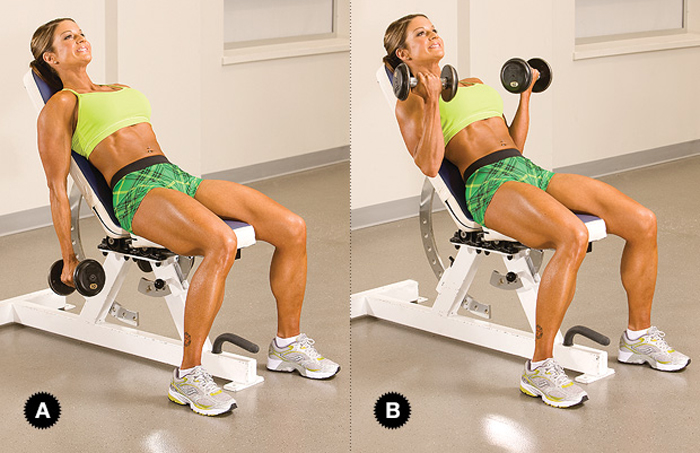Incline Dumbbell Curl: The Ultimate Guide to Building Bigger Biceps
When it comes to arm day, the incline dumbbell curl is a staple exercise for those looking to build impressive biceps. This variation targets the long head of the bicep, offering a unique advantage over standard curls by providing a deeper stretch and a more extensive range of motion. Whether you're a seasoned gym-goer or a fitness newbie, including incline dumbbell curls in your routine can accelerate your gains. In this guide, we’ll dive deep into the technique, benefits, and variations of this powerful exercise.
How to Perform the Incline Dumbbell Curl Correctly
Executing the incline dumbbell curl with proper form is crucial to maximizing its effectiveness and avoiding injury. Follow these steps to ensure you’re performing the exercise correctly:
- Set your workout bench to an incline of approximately 30 to 45 degrees.
- Sit back on the bench with your back fully supported, feet flat on the ground.
- Hold a dumbbell in each hand with a neutral grip, arms fully extended downwards.
- Keep your elbows close to your body and curl the weights up towards your shoulders while inhaling.
- Pause at the top of the movement for a second, ensuring maximum contraction of the biceps.
- Slowly lower the dumbbells back to the starting position while exhaling.
- Complete 3-4 sets of 8-12 reps, adjusting weight as necessary to maintain good form.
The Benefits of Incline Dumbbell Curls
1. Targeted Muscle Activation: By placing your arms behind your body, incline curls emphasize the long head of the biceps, contributing to a fuller bicep peak.
2. Improved Range of Motion: The angle of the bench allows your biceps to achieve a deeper stretch, engaging the muscle fibers more effectively.
3. Enhanced Muscle Contraction: This exercise encourages a stronger contraction due to the increased range of motion and the position of the arm relative to the body.
4. Reduced Risk of Cheating: The back-supported position reduces momentum and encourages strict form, preventing the use of body language to lift heavier weights.
Variations to Challenge Yourself
Looking to mix things up or challenge your biceps further? Try these incline dumbbell curl variations:
- Alternating Incline Dumbbell Curl: Curl one arm at a time to isolate and focus more intently on each bicep.
- Incline Hammer Curl: Swap the supinated grip for a neutral grip to target the brachialis and brachioradialis.
- Incline Dumbbell Curl with Twists: Add a rotation at the top of the lift to engage forearm muscles, enhancing grip strength.
Common Mistakes to Avoid
To maximize the benefits of the incline dumbbell curl, steer clear of these common pitfalls:
- Using Excessive Weight: This often leads to improper form and increased risk of injury. Focus on controlled movements instead.
- Not Fully Extending Arms: To engage the biceps fully, ensure your arms are completely extended at the bottom of the curl.
- Lifting Too Fast: Speed can compromise form. Opt for a slow and steady pace, especially during the eccentric phase of the curl.
Incorporating Incline Dumbbell Curls into Your Routine
For balanced bicep growth, include incline dumbbell curls as part of your arm routine, ideally one to two times a week. Pair them with other compound movements like chin-ups or classic barbell curls for an all-around arm workout. Remember, consistency is key; progress will follow with persistence and discipline.
In conclusion, the incline dumbbell curl is a potent tool in crafting well-defined, powerful biceps. By integrating it into your fitness regimen and paying attention to proper form and technique, you’ll be well on your way to achieving those sleeve-busting arms. Happy lifting!

